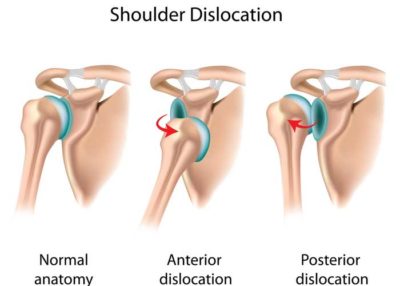Dislocated Shoulder Surgeon

Are you an athlete who participates in contact sports? If so, you may have experienced a dislocated shoulder. A dislocated shoulder requires immediate attention to relocate (reduce) the ball and socket joint to its correct anatomical position. Recurrent shoulder dislocations may require surgery to restabilize the shoulder joint. Dislocated shoulder surgeon Doctor Riley J. Williams provides diagnosis as well as surgical and nonsurgical treatment options for patients in Manhattan, Brooklyn, New York City and surrounding areas who have sustained a dislocated shoulder. Contact Dr. Williams’ team today!
What is a dislocated shoulder?
The shoulder is a ball-and-socket type of joint comprised of the head of the humerus (upper arm bone) and the glenoid socket of the scapula (shoulder blade). This joint is incredibly mobile. The soft tissue restraints of the shoulder allow individuals to throw overhead and lift heavy objects. The shoulder joint is susceptible to instability when these soft tissue restraints are injured. Falls onto the shoulder or arm can cause a traumatic shoulder dislocation in many cases, a traumatic shoulder dislocation can become a recurrent clinical problem thus causing significant disability in affected patients.

What is the treatment for a dislocated shoulder?
The initial treatment for a dislocated shoulder is a joint reduction. A frank dislocation is a clinical emergency and should be addressed quickly. Reductions can happen spontaneously or require the assistance of a medical professional. The manual manipulation of the humeral head back into the glenoid socket is imperative to proper healing.
Following the reduction of the shoulder joint, diagnostic imaging is performed to determine the extent of the injury. A dislocated shoulder may require surgery to repair detached or stretched ligaments. Direct repair of these ligaments reduces the risk of recurrent dislocation, and also reduces the risk of shoulder arthritis that may result from damage to the cartilage surfaces. Dr. Riley J. Williams, orthopedic shoulder surgeon, successfully treats patients in Manhattan, Brooklyn, New York City, NY and surrounding areas who have suffered a shoulder dislocation and who need surgery for shoulder instability and shoulder dislocations.
How is shoulder stabilization, or dislocated shoulder surgery, performed?
Most shoulder stabilization procedures (dislocated shoulder surgeries) are performed arthroscopically. A small camera (arthroscope) into the shoulder joint. This minimally invasive procedure utilizes specialized surgical instruments, placed through small incisions to repair and tighten the soft tissue damage that occurs in association with a shoulder dislocation. To ensure the restoration of normal shoulder stability, it is essential that the torn shoulder ligaments be reattached to their correct anatomical positions. Dr. Williams uses special surgical anchors that are secured onto the socket of the shoulder joint thus allowing the repaired ligaments to heal in the proper place.
In some circumstances, open surgery is necessary to stabilize the shoulder joint following a dislocation. This surgical method employs a slightly larger incision to better visualize the entire shoulder joint while completing the necessary ligament repairs. Dr. Williams may recommend this method over an arthroscopic repair for patients with chronic shoulder instability, bone loss, failed prior surgery or for patients who participate in contact sports.
What are the benefits of shoulder stabilization surgery?
Dr. Williams prefers the arthroscopic method for a dislocated shoulder surgery because it is minimally invasive. The camera, specialized surgical instruments, and incisions are small and allow for quicker recovery times. Arthroscopic shoulder stabilization also reduces the risk of infection, blood loss, as well as decreased pain and inflammation.
What is the recovery period like after a dislocated shoulder surgery?
The recovery period varies among patients as it is dependent upon the surgical approach taken by Dr. Williams. Most patients can expect to be fully recovered in 4-6 months; improvements in strength and range of motion of the shoulder continue for a year or more after shoulder stabilization. In general, patients in New York can expect the following:
- Immobilization of the shoulder joint with a sling immediately following surgery. To ensure proper healing of the repaired ligaments, the joint will remain immobilized for approximately 2 weeks.
- Pain management using cryotherapy (ice), non-steroidal anti-inflammatory medications, and limited use of opioids following surgery.
- Participation in a physical rehabilitation program. Passive range of motion exercises typically begin the day after surgery and continue for approximately 3-4 weeks. Once the repaired ligaments have completely healed, active range of motion exercises begin. The key to a patient’s shoulder stabilization success is by adhering to and completing a physical rehabilitation program.
For more information on the dislocated shoulder surgery, or to find a treatment for shoulder instability, please contact the office of Riley J. Williams, MD, an orthopedic shoulder surgeon serving Manhattan, Brooklyn, New York City, NY and surrounding areas.
